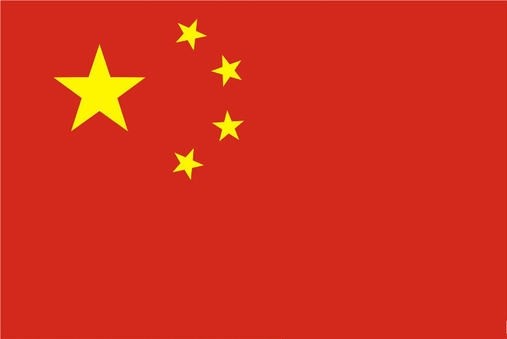Moisture measurements – online, real-time, contact-free
The measurement of moisture is the most popular application of our customers.
Our NIR photometers are able to measure the water content of most materials!
We configure each photometer specifically for its measurement task in your process analysis.
Our photometers
- measure online and in real-time;
- measure without contact to the product;
- can be integrated into existing production lines;
- are low-maintenance and easy to calibrate;
- provide an output signal for process control and monitoring.
Moisture of transparent materials
 If you need to analyze transparent materials – such as liquids and gases – the most suitable photometer is a transmission photometer. Light is sent through the product sample. The moisture in the product blocks parts of the light at certain wavelengths. The photometer detects those changes and converts them into a calibrated moisture value.
If you need to analyze transparent materials – such as liquids and gases – the most suitable photometer is a transmission photometer. Light is sent through the product sample. The moisture in the product blocks parts of the light at certain wavelengths. The photometer detects those changes and converts them into a calibrated moisture value.Moisture of opaque materials
 For moisture measurements of opaque materials – such as solids or grains – we recommend a reflection photometer. Light is sent on the product sample. The moisture in the product affects the reflectivity of the product at certain wavelengths. The photometer detects those changes in the reflected light and converts them into a calibrated moisture value.
For moisture measurements of opaque materials – such as solids or grains – we recommend a reflection photometer. Light is sent on the product sample. The moisture in the product affects the reflectivity of the product at certain wavelengths. The photometer detects those changes in the reflected light and converts them into a calibrated moisture value.Moisture of semi-transparent layers
 Transmission and reflection can be combined to increase sensitivity. The most common example is the moisture measurement of PVB layers for the safety glass of car windshields with our PVB layer analyser.
Transmission and reflection can be combined to increase sensitivity. The most common example is the moisture measurement of PVB layers for the safety glass of car windshields with our PVB layer analyser.The light is sent through the PVB and falls onto a mirror which reflects it and sends it through the PVB layer once more.
How does it work?
Basically, we exploit the specific properties of water molecules. Water molecules possess many physical degrees of freedom (in terms of rotations and oscillations of the atoms within the molecule). That leads to a multitude of absorption lines and bands in the near-infrared spectrum. The near infrared (NIR) is the spectral range directly adjacent to visible light (with slightly longer wavelengths of 700 to 2500 nanometers). Common incandescent lamps produce not only visible light, but also usable levels of near-infrared light and can be used as a light source for this type of photometric moisture analysis.Safety risk: Water in the braking system
Our brake fluid monitor TMK480-CT can determine the water content of brake fluid fast, precisely, without contact or interference with the filling process. Critical values of water content can be detected precisely and reliably. This system has been developed for the automotive industry and guarantees a continuous quality control of the brake fluid, providing safety and quality.
Diffusion, miniscule leaks, and the hygroscopic character of brake fluid lead to an ever-increasing water contamination in the filling system and significantly reduce the boiling temperature of the brake fluid. A water content of just 3 percent can lead to a total failure of the braking system.
Instead of longsome boiling tests or Karl-Fischer titration, which all allow but random samples, our instrument provides continuous, maintenance-free measurements.

Measurement range: 0–1 % humidity
Accuracy: +/- 0.01 %
Reproducibility: 0.005 %
Drift: 0.005 % / 24 h
T90: 5 sec.
Pressure resistant up to: 10 bar
Max. environmental temperature: 50 °C
Temperature dependence without optional compensation: 0.002 % / °C
RMK-9T Layer Analyser
 Plastic foils made of polyvinyl butyral (PVB) are required to produce laminated safety glass. Such foils connect glass panes in such a way that in the case of shattering the broken pieces of glass stick to the PVB layer and do not separate. For this safety function, a reliable compound is extremely important.
Plastic foils made of polyvinyl butyral (PVB) are required to produce laminated safety glass. Such foils connect glass panes in such a way that in the case of shattering the broken pieces of glass stick to the PVB layer and do not separate. For this safety function, a reliable compound is extremely important.
Adhesion works best with humidities between 0.4 and 0.65%.
If the water content exceeds this range, e.g., due to humidity entering the system from outside, the adhesion is reduced and the PVB layer can detach from the glass (delamination). In order to prevent this from happening, the water content needs to be closely monitored during the production, storage, transportation, and lamination of the PVB safety glass. Our foil monitor RMK-9T does just that.

The water content in the PVB layer is measured by observing the NIR absorption by the water. If needed, the layer thickness can also be measured.
The water content depends on the layer thickness. Therefore, it is possible to determine the absolute amount of water for different known values of thickness and take this dependence into account. With this method, the measured water content of the layer no longer depends on the layer thickness.
Measurement range: 0–1% humidity / 0–1 / 0–2 mm thickness
Accuracy: +/- 0.01 %; Reproducibility: 0.005 %, Drift: 0.005 % in 24h; T90:1 sec.

